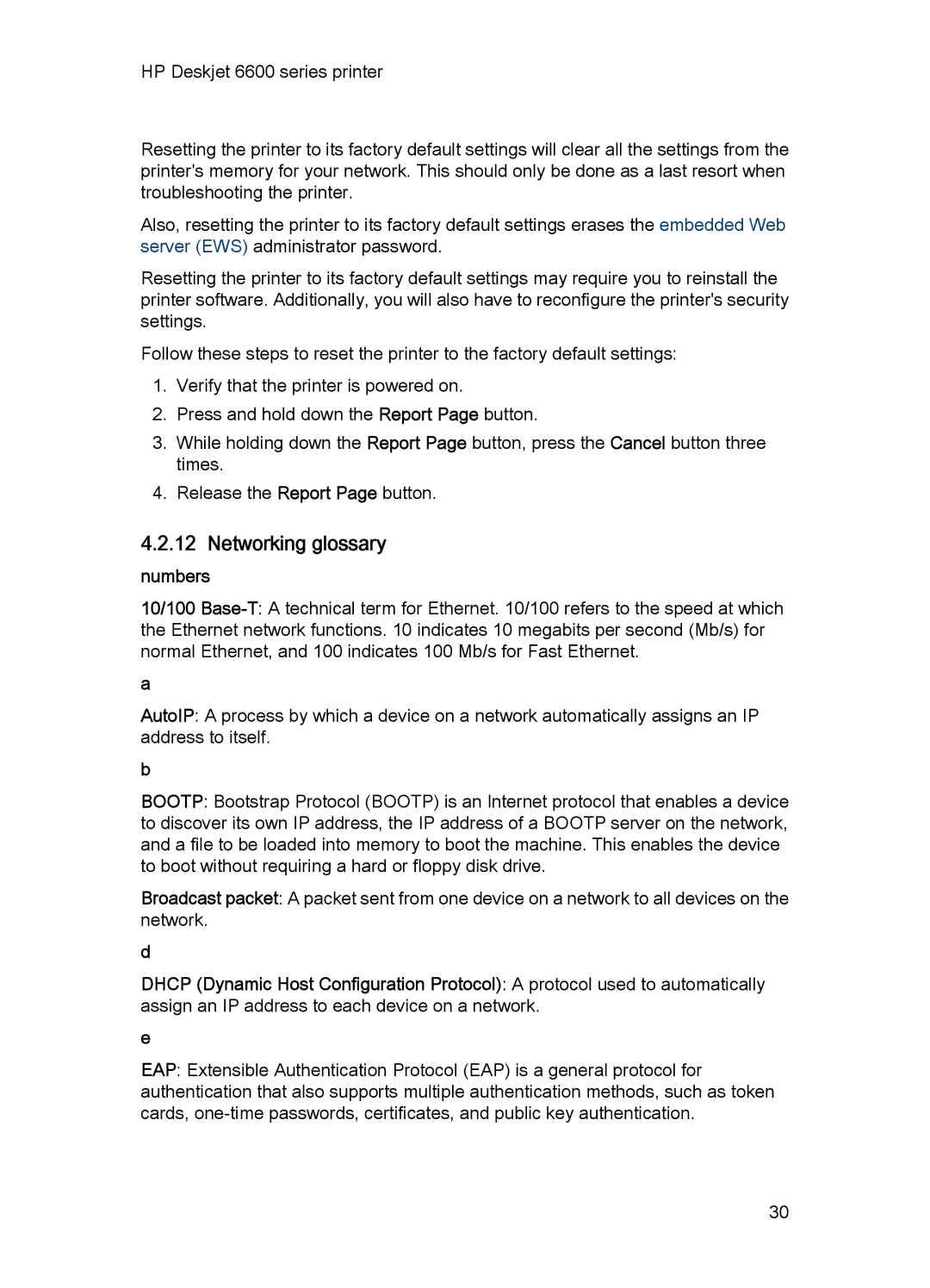HP Deskjet 6600 series printer
Resetting the printer to its factory default settings will clear all the settings from the printer's memory for your network. This should only be done as a last resort when troubleshooting the printer.
Also, resetting the printer to its factory default settings erases the embedded Web server (EWS) administrator password.
Resetting the printer to its factory default settings may require you to reinstall the printer software. Additionally, you will also have to reconfigure the printer's security settings.
Follow these steps to reset the printer to the factory default settings:
1.Verify that the printer is powered on.
2.Press and hold down the Report Page button.
3.While holding down the Report Page button, press the Cancel button three times.
4.Release the Report Page button.
4.2.12Networking glossary numbers
10/100
a
AutoIP: A process by which a device on a network automatically assigns an IP address to itself.
b
BOOTP: Bootstrap Protocol (BOOTP) is an Internet protocol that enables a device to discover its own IP address, the IP address of a BOOTP server on the network, and a file to be loaded into memory to boot the machine. This enables the device to boot without requiring a hard or floppy disk drive.
Broadcast packet: A packet sent from one device on a network to all devices on the network.
d
DHCP (Dynamic Host Configuration Protocol): A protocol used to automatically assign an IP address to each device on a network.
e
EAP: Extensible Authentication Protocol (EAP) is a general protocol for authentication that also supports multiple authentication methods, such as token cards,
30
